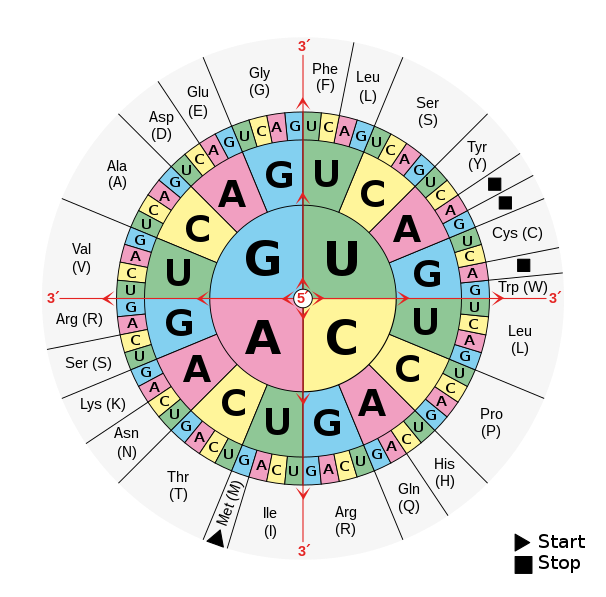9.2: Bitter Taste (Activity)
- Page ID
- 24791
\( \newcommand{\vecs}[1]{\overset { \scriptstyle \rightharpoonup} {\mathbf{#1}} } \)
\( \newcommand{\vecd}[1]{\overset{-\!-\!\rightharpoonup}{\vphantom{a}\smash {#1}}} \)
\( \newcommand{\dsum}{\displaystyle\sum\limits} \)
\( \newcommand{\dint}{\displaystyle\int\limits} \)
\( \newcommand{\dlim}{\displaystyle\lim\limits} \)
\( \newcommand{\id}{\mathrm{id}}\) \( \newcommand{\Span}{\mathrm{span}}\)
( \newcommand{\kernel}{\mathrm{null}\,}\) \( \newcommand{\range}{\mathrm{range}\,}\)
\( \newcommand{\RealPart}{\mathrm{Re}}\) \( \newcommand{\ImaginaryPart}{\mathrm{Im}}\)
\( \newcommand{\Argument}{\mathrm{Arg}}\) \( \newcommand{\norm}[1]{\| #1 \|}\)
\( \newcommand{\inner}[2]{\langle #1, #2 \rangle}\)
\( \newcommand{\Span}{\mathrm{span}}\)
\( \newcommand{\id}{\mathrm{id}}\)
\( \newcommand{\Span}{\mathrm{span}}\)
\( \newcommand{\kernel}{\mathrm{null}\,}\)
\( \newcommand{\range}{\mathrm{range}\,}\)
\( \newcommand{\RealPart}{\mathrm{Re}}\)
\( \newcommand{\ImaginaryPart}{\mathrm{Im}}\)
\( \newcommand{\Argument}{\mathrm{Arg}}\)
\( \newcommand{\norm}[1]{\| #1 \|}\)
\( \newcommand{\inner}[2]{\langle #1, #2 \rangle}\)
\( \newcommand{\Span}{\mathrm{span}}\) \( \newcommand{\AA}{\unicode[.8,0]{x212B}}\)
\( \newcommand{\vectorA}[1]{\vec{#1}} % arrow\)
\( \newcommand{\vectorAt}[1]{\vec{\text{#1}}} % arrow\)
\( \newcommand{\vectorB}[1]{\overset { \scriptstyle \rightharpoonup} {\mathbf{#1}} } \)
\( \newcommand{\vectorC}[1]{\textbf{#1}} \)
\( \newcommand{\vectorD}[1]{\overrightarrow{#1}} \)
\( \newcommand{\vectorDt}[1]{\overrightarrow{\text{#1}}} \)
\( \newcommand{\vectE}[1]{\overset{-\!-\!\rightharpoonup}{\vphantom{a}\smash{\mathbf {#1}}}} \)
\( \newcommand{\vecs}[1]{\overset { \scriptstyle \rightharpoonup} {\mathbf{#1}} } \)
\(\newcommand{\longvect}{\overrightarrow}\)
\( \newcommand{\vecd}[1]{\overset{-\!-\!\rightharpoonup}{\vphantom{a}\smash {#1}}} \)
\(\newcommand{\avec}{\mathbf a}\) \(\newcommand{\bvec}{\mathbf b}\) \(\newcommand{\cvec}{\mathbf c}\) \(\newcommand{\dvec}{\mathbf d}\) \(\newcommand{\dtil}{\widetilde{\mathbf d}}\) \(\newcommand{\evec}{\mathbf e}\) \(\newcommand{\fvec}{\mathbf f}\) \(\newcommand{\nvec}{\mathbf n}\) \(\newcommand{\pvec}{\mathbf p}\) \(\newcommand{\qvec}{\mathbf q}\) \(\newcommand{\svec}{\mathbf s}\) \(\newcommand{\tvec}{\mathbf t}\) \(\newcommand{\uvec}{\mathbf u}\) \(\newcommand{\vvec}{\mathbf v}\) \(\newcommand{\wvec}{\mathbf w}\) \(\newcommand{\xvec}{\mathbf x}\) \(\newcommand{\yvec}{\mathbf y}\) \(\newcommand{\zvec}{\mathbf z}\) \(\newcommand{\rvec}{\mathbf r}\) \(\newcommand{\mvec}{\mathbf m}\) \(\newcommand{\zerovec}{\mathbf 0}\) \(\newcommand{\onevec}{\mathbf 1}\) \(\newcommand{\real}{\mathbb R}\) \(\newcommand{\twovec}[2]{\left[\begin{array}{r}#1 \\ #2 \end{array}\right]}\) \(\newcommand{\ctwovec}[2]{\left[\begin{array}{c}#1 \\ #2 \end{array}\right]}\) \(\newcommand{\threevec}[3]{\left[\begin{array}{r}#1 \\ #2 \\ #3 \end{array}\right]}\) \(\newcommand{\cthreevec}[3]{\left[\begin{array}{c}#1 \\ #2 \\ #3 \end{array}\right]}\) \(\newcommand{\fourvec}[4]{\left[\begin{array}{r}#1 \\ #2 \\ #3 \\ #4 \end{array}\right]}\) \(\newcommand{\cfourvec}[4]{\left[\begin{array}{c}#1 \\ #2 \\ #3 \\ #4 \end{array}\right]}\) \(\newcommand{\fivevec}[5]{\left[\begin{array}{r}#1 \\ #2 \\ #3 \\ #4 \\ #5 \\ \end{array}\right]}\) \(\newcommand{\cfivevec}[5]{\left[\begin{array}{c}#1 \\ #2 \\ #3 \\ #4 \\ #5 \\ \end{array}\right]}\) \(\newcommand{\mattwo}[4]{\left[\begin{array}{rr}#1 \amp #2 \\ #3 \amp #4 \\ \end{array}\right]}\) \(\newcommand{\laspan}[1]{\text{Span}\{#1\}}\) \(\newcommand{\bcal}{\cal B}\) \(\newcommand{\ccal}{\cal C}\) \(\newcommand{\scal}{\cal S}\) \(\newcommand{\wcal}{\cal W}\) \(\newcommand{\ecal}{\cal E}\) \(\newcommand{\coords}[2]{\left\{#1\right\}_{#2}}\) \(\newcommand{\gray}[1]{\color{gray}{#1}}\) \(\newcommand{\lgray}[1]{\color{lightgray}{#1}}\) \(\newcommand{\rank}{\operatorname{rank}}\) \(\newcommand{\row}{\text{Row}}\) \(\newcommand{\col}{\text{Col}}\) \(\renewcommand{\row}{\text{Row}}\) \(\newcommand{\nul}{\text{Nul}}\) \(\newcommand{\var}{\text{Var}}\) \(\newcommand{\corr}{\text{corr}}\) \(\newcommand{\len}[1]{\left|#1\right|}\) \(\newcommand{\bbar}{\overline{\bvec}}\) \(\newcommand{\bhat}{\widehat{\bvec}}\) \(\newcommand{\bperp}{\bvec^\perp}\) \(\newcommand{\xhat}{\widehat{\xvec}}\) \(\newcommand{\vhat}{\widehat{\vvec}}\) \(\newcommand{\uhat}{\widehat{\uvec}}\) \(\newcommand{\what}{\widehat{\wvec}}\) \(\newcommand{\Sighat}{\widehat{\Sigma}}\) \(\newcommand{\lt}{<}\) \(\newcommand{\gt}{>}\) \(\newcommand{\amp}{&}\) \(\definecolor{fillinmathshade}{gray}{0.9}\)Genetics leaves a bad taste in my mouth… or not
Some of our personal preferences arise from the way we were brought up. Culture plays a role in our likes and dislikes. Likewise, our experiences play a role in how we respond to certain stimuli. Another major factor that plays a role in our preferences comes wired in our genome. The DNA in our cells is the instruction manual for who we are. We are programmed to seek out things of nutritive values in order to acquire raw materials like carbohydrates, proteins, and lipids. In our search for nutritive compounds, we have learned to avoid things that don’t taste good. Bitter things have a tendency to be associated with toxic compounds in nature. When eating a food item for the first time, molecules hit our tongue and stimulate multiple sensations: sweet, sour, salty, savory, and bitter. Attributed to these multiple taste types are a diverse family of receptors that bind to the molecules that result in our perception of these sensations. Something bitter might make us learn to avoid this food item in the future.
One type of bitter receptor senses the presence of a chemical called phenylthiocarbamide (PTC). This chemical chemically resembles toxic compounds found in plants but is non-toxic. The ability to taste PTC comes from a gene called TAS2R38. This gene encodes a protein that on our tongues that communicates the bitterness of this chemical. There are two common alleles of this gene with at least five more uncommon variants. Within the two common forms, a single nucleotide polymorphism (SNP) is responsible for changing one amino acid in the receptor. It’s this difference of one amino acid that results in the ability of the receptor to either respond or not respond to PTC. We inherit one copy of the gene from our father and one copy from our mother. How our parents' gametes formed and what alleles we received during the fertilization event determines how we respond to this chemical. Because we each have 2 copies of this gene, we can utilize simple Mendelian genetics to understand which allele is dominant or recessive.
- Place a piece of “Control” paper on the tongue and indicate if there is a taste.
- Place a piece of “PTC” paper on the tongue and indicate if there is a taste and the taste severity.
- Fill out the table for the class to identify how many non-tasters, tasters, or super-tasters there are.
- Indicate if you believe the trait is dominant or recessive (ability to taste or not taste).
- Assign a descriptor allele for the dominant (a capital letter) or the recessive (a lowercase letter) and draw a Punnet square for the F2 generation of 2 Heterozygous parents.
- Compare the class tally of tasters and non-tasters in the class and discuss with your instructor if there is a clear dominance of this trait.
Table: PTC Tasting Tally
| Phenotypes | Number | % Total |
| PTC Tasters (Dominant or Recessive) | ||
| PTC Non-tasters (Dominant or Recessive) | ||
| Total |
Questions:
1. How do you explain the presence of those who can’t taste PTC, those who can taste it and those who really can’t stand the taste of it?
2. This chemical is non-toxic and doesn’t exist in nature. Do you think there is a selective pressure that confers an advantage to those who do taste it?
Exercise: Coding Bitterness:
Prior to this exercise, review the Central Dogma.
The full coding sequence of TAS2R38 is 1,002 bases (334 amino acids) long. A segment of the gene is shown below where the SNP (in red) occurs. Variant 1 is the version of the gene that encodes for the ability to taste PTC. Variant 2 is the version of the gene that is unable to bind to PTC. This SNP mutation is called a missense mutation because it changes the amino acid. Some mutations cause the insertion of a premature stop codon. This nonsense mutation results in a truncated protein and can be disastrous to the function. We already know that the simple substitution of one nucleotide translates to a change in one amino acid and determines the ability to taste PTC. Imagine if a large group of amino acids from the protein was missing.
With the template strand (“Complement”) information:
- Write the sequence of the coding strand.
- Write the sequence of the mRNA
- Use the Genetic Code Chart to translate the amino acid sequence
Variant 1
Coding Strand : 5′-
Complement : 3′-TTC TCC GTC CGT GAC TCG-5′
mRNA : 5′-
Amino Acid :
Variant 2
Coding Strand : 5′-
Complement : 3′-TTC TCC GTC GGT GAC TCG-5′
mRNA : 5′-
Amino Acid :

PCR Genotyping the TAS2R38 PTC receptor:
- 5’-CCTTCGTTTTCTTGGTGAATTTTTGGGATGTAGTGAAGAGGCGG-3’ (Forward Primer)
- 5′-AGGTTGGCTTGGTTTGCAATCATC-3′ (Reverse Primer)
- PCR the DNA samples extracted from cheek cells using the PCR Beads.
- Pour 2% agarose into casting apparatus in refrigerator.
- 2 gels per class need to be made → 100ml of TBE with 2g agarose.
- Add 5μl SYBR safe solution into the molten agarose before casting.
- Place 2 sets of combs into the gel → at one end and in the middle.
- Digest PCR product with Hae III.
- Remove 10μl of PCR product into a fresh tube.
- Add 1μl of HaeIII enzyme into the tube.
- Incubate for 10 minutes at 37°C.
- Load gel with DNA ladder, Digested and Undigested.
- the undigested sample is from the original PCR.
- Run gel at 120V for 20 minutes.
- Visualize on the UV transilluminator.
SNP Detection:
The longer primer ends with the sequence “GG”. Both alleles at this locus will amplify equally well with this primer set, however, one allele will have the sequence “GGGC” and another “GGCC”. “GGCC” is the restriction site for the enzyme HaeIII. The digestion of this amplified DNA will be digestible for one allele and yield a DNA fragment the size of the large primer (44 bp) as well as the remainder of the amplicon. Because of this difference in digestion profile of the amplicon, we can identify the 2 alleles at this locus.
Analysis Questions:
- What is the size of the PCR product?
- The long primer is 44bp. If the amplicon of the allele digests, what are the sizes of fragments expected following HaeIII?
- Which allele is the one that can be identified through Hae III digestion?
- Use the results of the PTC paper test.
- Some lanes contain 3 bands instead of 1 or 2. Can you explain this?


